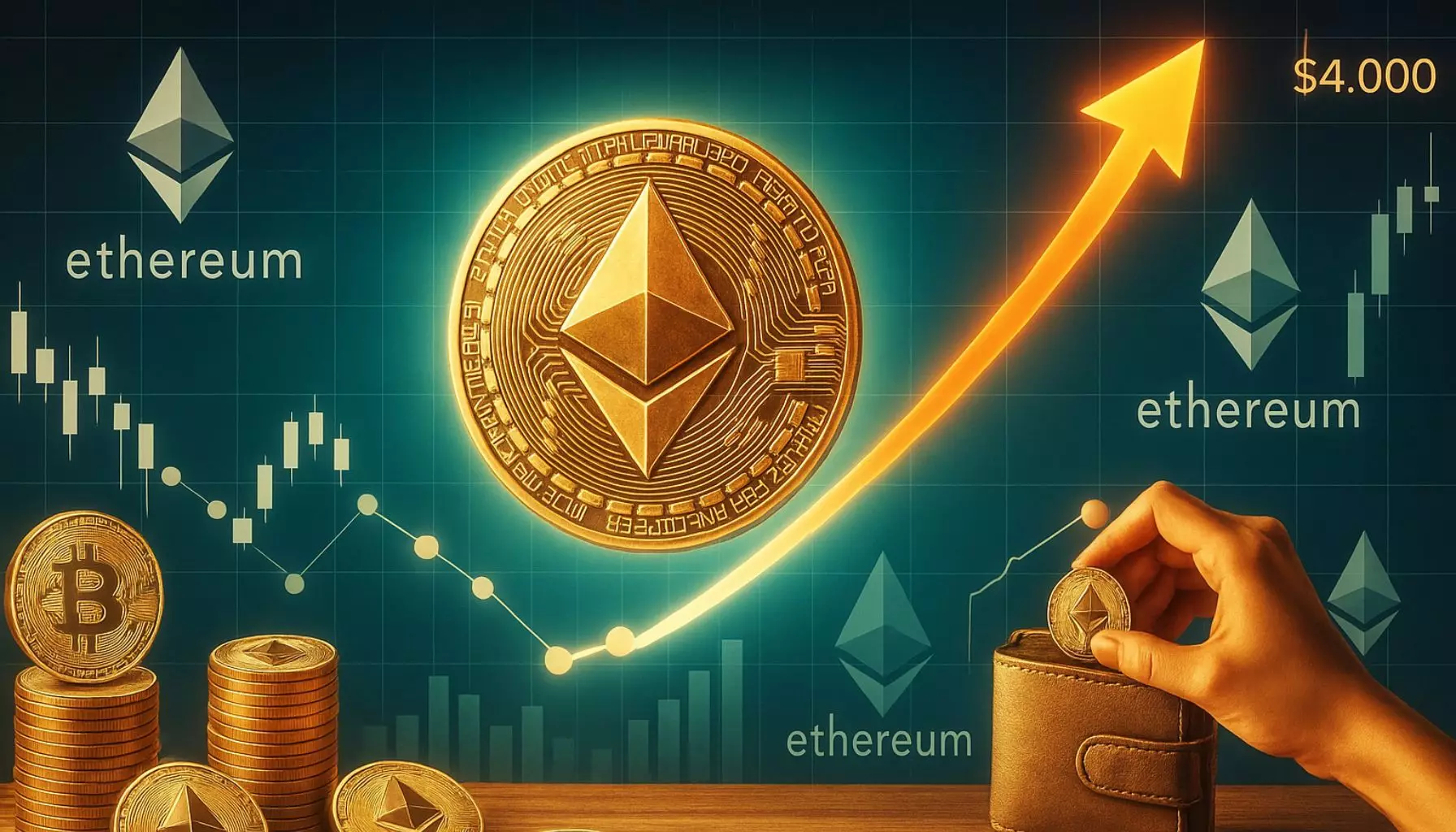Ethereum has always been more than just a cryptocurrency; it embodies a vision of decentralized finance, yet its market behavior often reflects broader societal and political climates. As tensions flare in the Middle East, particularly amidst recent confrontations between Israel and Iran, Ethereum’s resilience is being tested like never before. Currently trading at critical levels around $2,556, Ethereum’s price action is not just a reflection of market dynamics but also of global sentiment, which has taken a notable turn toward uncertainty.
The Power of Support: $2,500 as a Key Indicator
At the heart of Ethereum’s current struggle lies the $2,500 support level. This price point has historically served as a launching pad for significant price rallies, notably in August 2021 and again early this year. The ongoing geopolitical tensions have sparked fear that a breach below this threshold could prompt immense selling pressure, derailing the bullish sentiment that once defined this asset. Analysts have drawn parallels between the current situation and past market behavior, suggesting that a sustainable hold above $2,500 is essential not just for Ethereum but for the broader altcoin market.
Judging by trends and historical data, the market often behaves cyclically. If Ethereum can maintain this support, there may still be a chance for an upward trajectory, potentially eyeing the $4,000 mark. As much as the technical analysts emphasize this, it begs the question: will market forces allow history to repeat itself, or is a more ominous correction on the horizon?
Geopolitical Risks: More than Just Market Noise
While technical analysis provides valuable insights, it’s crucial to acknowledge that the current market turbulence isn’t merely a product of trading dynamics. The backdrop of escalating geopolitical conflicts significantly influences market sentiment and dynamics. The news loop around Israel’s military actions against Iran has raised flags across various asset classes, including cryptocurrencies. This newly introduced volatility isn’t just fleeting; it can reshape how investors perceive risk, leading to more pronounced sell-offs in instances where stability is most needed.
For Ethereum, this political landscape is troubling. Volatility can lead to panic-selling, and while blockchain technology is seen as a hedge against traditional financial instability, cryptocurrencies like Ethereum are still tethered to investor sentiment, which is now clouded by fear of the unknown.
Technical Analysis Highlights Resilience, Yet Discomfort Remains
Despite experiencing a steep 14% drop in just days, Ethereum’s performance reveals a complex narrative. Technical analysts, such as the well-regarded Rekt Capital, are reiterating the importance of the $2,500 support level. Their calculations show that despite the recent dip, the currency has managed to stay above crucial moving averages — indicators that many view as signs of potential recovery. However, with increased volatility and market sentiment swinging wildly, investors are rightly wary.
The duality of hope and caution paints a vivid picture; while Ethereum has exhibited resilience in past cycles, the potential for a breakdown looms large. The red 200-day moving average, currently threatening to act as a robust resistance level, prohibits a clear breakout to higher price levels. The market psychology is nuanced: traders want to believe in a rebound, yet the palpable fear of geopolitical impacts could incite a reverse course if the price fails to keep levels of support intact.
Market Sentiment: The Shifting Tide of Investor Psychology
As recently as last week, the sentiment surrounding Ethereum was overwhelmingly bullish, with many anticipating a breakout beyond the $3,000 threshold. The abrupt transition to fear conveys just how quickly investor psychology can shift — a fact that underscores the inherent volatility of crypto markets. The acute sensitivity to external events is alarming; as investors bet on potential rallies based on technical setups, they are now left navigating the choppy waters of global politics that have derailed optimism.
This mindfulness of sentiment is crucial for anyone looking to dive into the Ethereum market. Ethereum’s selling pressure following geopolitical unrest invites deeper questions about investor confidence not just in Ethereum, but in cryptocurrency as a whole. If Ethereum can stabilize and ascend from these volatile circumstances, will investors regain conviction, or has the fear fomented irreversible skepticism?
Future Outlook: What Lies Ahead for Ethereum?
The crucial question stands: can Ethereum hold its $2,500 stronghold amid geopolitical unease? A breach and subsequent decline to lower levels would not only threaten the asset’s price but could also sow discord in the entire crypto community, prompting a shift back to more traditional asset classes. Conversely, if Ethereum can leverage its historical support and regain momentum, it could set off an altcoin resurgence that coalitions with broader market recovery.
Investors and analysts alike are holding their breath, watching closely as political narratives unfold and their effects ripple through the markets. Ethereum’s battle is emblematic of a larger conversation concerning market strength, investor resolve, and the implications of global dynamics on digital currencies. The unfolding scenario is both precarious and promising, revealing how interconnected our financial perspectives have become with the world at large.
















Leave a Reply